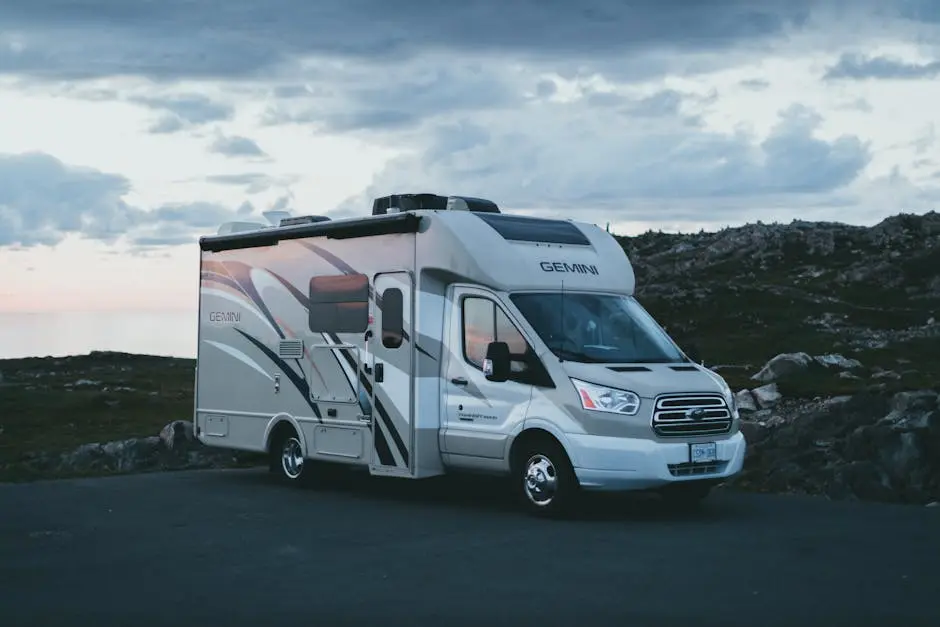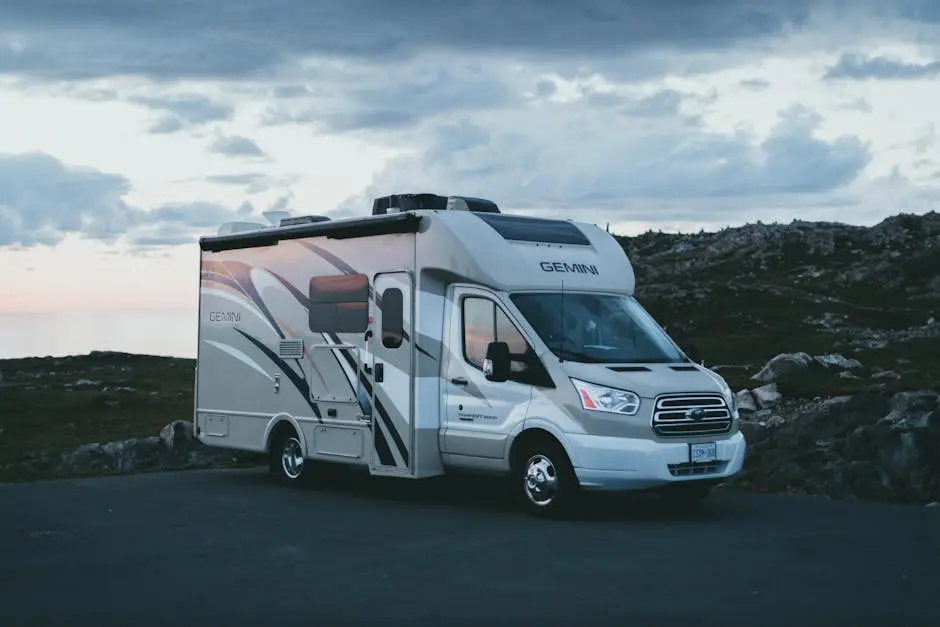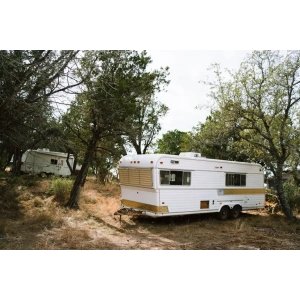Embarking on a Texas coast adventure in an RV is an exciting experience! However, before you hit the road, understanding the ins and outs of RV sales can make all the difference in preparing for your journey. Whether you’re a first-time buyer or looking to upgrade, these essential tips will guide you through the process and help you make informed decisions.
1. Understanding the RV Market Trends
Explore the latest trends in RV sales, including popular models and pricing influences that can affect your purchase.
The RV industry is constantly evolving, with new models hitting the market each year that cater to varying lifestyles and preferences. For instance, in recent years, there has been an uptick in the popularity of smaller, more fuel-efficient RVs, perfect for couples or individuals looking for a getaway that doesn’t require a huge investment in gas. Understanding these trends isn’t just about knowing what’s hot—it’s also about positioning yourself as a savvy buyer who can take advantage of market fluctuations. Keeping an eye on manufacturer reports and sales data can give you insights into when to buy and what might be going out of style.
2. Setting a Realistic Budget
Learn how to set a budget that includes not just the purchase price, but also insurance, maintenance, and travel expenses.
Setting a budget isn’t simply about the sticker price of the RV; it’s a comprehensive evaluation of all associated costs. Start by determining how much you can comfortably spend on the purchase itself. Then, think ahead to ongoing costs that may arise. Insurance, for instance, is an often-overlooked expense. Different RV types can attract different insurance premiums based on size, model, and your driving history. Additionally, factor in maintenance costs—after all, an RV requires upkeep just like any vehicle. Finally, don’t forget about the cost for gas, campsite fees, and even potential repairs while you’re on the road. By planning for these aspects, you can ensure that your adventure doesn’t break the bank before it even begins.
3. Choosing Between New and Used RVs
Understand the pros and cons of buying new versus used, and how to evaluate your priorities.
When considering whether to buy new or used, weigh the advantages of each option carefully. New RVs come with the latest features, updated technology, and a full manufacturers warranty, offering peace of mind. However, they also depreciate quickly, often losing a significant percentage of their value as soon as you drive them off the lot. On the other hand, used RVs typically cost less and can provide better value for your money, especially if they have been well maintained. Yet, with used models, you might face hidden issues or the absence of a warranty. The decision ultimately hinges on your intended use, budget, and appetite for risk—balance your needs with these factors to make the best choice.
4. Researching the Right RV Type for You
Discover the different types of RVs available, from Class A to travel trailers, and find out which suits your needs best.
The variety of RV types can be overwhelming; however, understanding the distinctions can simplify your decision-making process. Class A RVs are luxurious and spacious, often equipped with full bathrooms and kitchens, making them great for long trips with family. But if you’re traveling solo or as a couple, a Class B camper van could be ideal due to its compact size and versatility. For those looking for a balance between space and cost, travel trailers may offer the perfect solution—all without the need for a hefty price tag that comes with larger models. Spend some time on research, visiting shows or dealerships, and, importantly, talking to other RV owners about their experiences. Each type has its pros and cons, so aligning them with your travel style is key.
5. Evaluating RV Features and Amenities
Identify key features that are important to you, such as kitchen size, bathroom layout, and sleeping arrangements.
When it comes to RVs, the right features can make or break your experience. A spacious kitchen can be a game-changer if you plan on cooking meals during your trip; however, cramped quarters can quickly lead to frustration. Consider how many people you typically travel with, and examine sleeping arrangements that can accommodate everyone comfortably. Additionally, think about bathroom layouts, as having a separate shower can enhance your comfort level. Utilize a checklist to compare various models and keep notes on what you like. Prioritizing your desires will enable you to hone in on an RV that not only meets your needs but feels like home as you navigate the open road.
6. Inspecting an RV Before Buying
Get tips on how to conduct a thorough inspection, including checking the mechanical systems and the overall condition of the RV.
A comprehensive inspection is crucial before making any RV purchase. Start with the exterior—look for signs of wear or damage, including rust, which can be indicative of more severe issues. Don’t forget to check the tires, as they are often a neglected point that can lead to troubles down the road. Next, move inside and thoroughly examine the interior. Test all appliances and systems, from the air conditioning to the plumbing, ensuring everything functions as intended. It’s also wise to ask for the RV’s history, including previous maintenance records. Document your findings; this will give you leverage should any issues arise or if you need to negotiate the price with the dealer.
7. The Importance of a Test Drive
Understand why taking a test drive is essential in determining if the RV feels right for you.
Jumping behind the wheel of an RV may be the most significant step in your buying journey. This is your opportunity to see how the vehicle handles on the road—whether it feels too bulky or just right for your driving style. Pay attention to blind spots, ease of maneuvering, and the responsiveness of the steering. Additionally, recognize that your comfort during the drive tells you so much about whether this RV is the right fit for your adventure. An enjoyable driving experience will set the tone for countless memorable trips ahead. Don’t shy away from spending a significant amount of time on this step, as the right fit is incredibly important for your peace of mind.
8. Negotiating the Best Price
Learn strategies for negotiating the purchase price effectively and getting the best deal.
Negotiation is often a dance—the more prepared you are, the better your chances of achieving a favorable deal. Start by doing your research. Understand the fair market value for your chosen model, checking sources like NADA Guides or Kelley Blue Book for accuracy. After that, when you meet the seller, maintain a friendly demeanor but be firm about your budget. Don’t hesitate to express your concerns regarding the asking price based on your findings. Often, sellers expect negotiations, so just be sure to have supportive facts ready to strengthen your position. And remember—it’s as much about finding value as it is about obtaining the vehicle itself, so don’t let emotions cloud your judgment.
9. Understanding Financing Options
Explore various financing options available for RV purchases and how to choose the best one.
Financing can seem daunting, but a little knowledge goes a long way in making an informed decision. Traditional lender options are popular, but don’t overlook credit unions or specialized RV lenders often provide competitive rates and knowledgeable service tailored to your needs. A solid credit score improves your chances of securing favorable terms, so check your credit report and address any issues beforehand. It’s also crucial to read the fine print of any loan agreement, as some may include hidden fees or less favorable repayment structures. Securing financing is a significant step, but ensuring that you understand your commitment can lead to a smoother ownership experience down the line.
10. Reading the Fine Print
Know what to look for in contracts and warranties before signing on the dotted line.
The details are often hidden in the fine print, but overlooking them can lead to complications down the line. As you review contracts and warranties, look for specific terms about what is covered and what isn’t, particularly concerning repairs and manufacturer obligations. Pay careful attention to mileage limits if applicable, as well as any policy regarding returns or exchanges. Often, warranties may seem comprehensive, but clarifying the limitations before purchase can save you a lot of stress later. If something feels inadequate or raises a red flag, do not hesitate to ask for clarification or even renegotiate terms. This attention to detail will serve you well in your RV journey.
11. Learning About RV Maintenance
Get familiar with essential RV maintenance tips to keep your new vehicle in top shape.
Owning an RV isn’t just about the adventures; it’s vital to understand maintenance to prolong the life of your investment. Start with the basics: regular oil changes, tire rotation, and checking fluid levels are fundamental to keeping your RV on the road. Additionally, pay attention to the roof, as leaks can lead to costly repairs down the line. Familiarize yourself with the systems within your RV—like the electrical and plumbing setups—to spot issues before they become serious. Consider creating a maintenance schedule to help keep you on track with inspections and service checks. Remember, proactive care can make your RV more reliable and enjoyable, ensuring countless trips filled with memories!
12. Finding Reputable RV Dealers
Discover how to find trustworthy RV dealers and resources to help in your buying journey.
Finding the right dealer is as critical as the RV itself. Look for established dealerships with a positive reputation in the community; reviews and testimonials can provide great insights into their customer service. Consider visiting forums or RV clubs where members discuss their experiences; tapping into this knowledge can also lead you to hidden gems. Don’t shy away from reaching out via phone or email to ask questions; how they respond can reveal how you’ll be treated in the long run. A reputable dealer will be transparent about pricing and offer warranties, while a less trustworthy one may hide behind vague agreements—stay vigilant!
13. Utilizing Online Resources
Make the most of online platforms to research, compare, and connect with sellers.
The internet is one of the most powerful tools at your disposal when searching for an RV. First, use trusted sites like RV Trader or Outdoorsy to explore listings and gain a broad view of what’s available. These platforms often allow you to filter based on your criteria, saving precious time. Additionally, social media groups and forums dedicated to RV enthusiasts can provide valuable insights, while also connecting you with other buyers and sellers. Don’t underestimate the power of online reviews—perusing these can give you a clearer idea of a seller’s reliability. By leveraging these methods, you’ll enhance your RV search with information that empowers you to make a confident purchase.
14. Networking with Other RV Enthusiasts
Engage with fellow RV lovers through clubs and online communities for tips and advice.
Networking with other RV enthusiasts can be an invaluable resource in your journey. Joining local or online RV clubs allows you to connect with those who share your passion. Members often share reviews, experiences, and tips that can help you avoid pitfalls and make better purchasing choices. Additionally, don’t overlook the power of social media—many RV groups exist on platforms like Instagram and Facebook, where you can ask questions and get feedback from seasoned travelers. Engaging in these communities can lead to friendship and recommendations while also enhancing your knowledge, ultimately contributing to a richer RV experience as you hit the road.
15. Planning Your Texas Coast Trip
Tips for mapping out your road trip, including must-see stops and campgrounds along the Texas coast.
Planning your trip along the Texas coast is part of the excitement of owning an RV. Start by selecting key destinations that appeal to you—think about beaches, parks, and attractions you want to visit. The Texas coast is rich with options like South Padre Island, Corpus Christi, and Galveston, each offering distinct experiences. Once you’ve mapped out your route, ensure you locate campgrounds that fit your preferences—some offer full services while others are more rustic. Make sure to book in advance, especially during peak seasons, as RV spots can fill quickly. Lastly, incorporate flexibility into your itinerary, allowing for spontaneous stops and discoveries that create lifelong memories. The journey is just as important as the destination, so take time to savor every moment!







